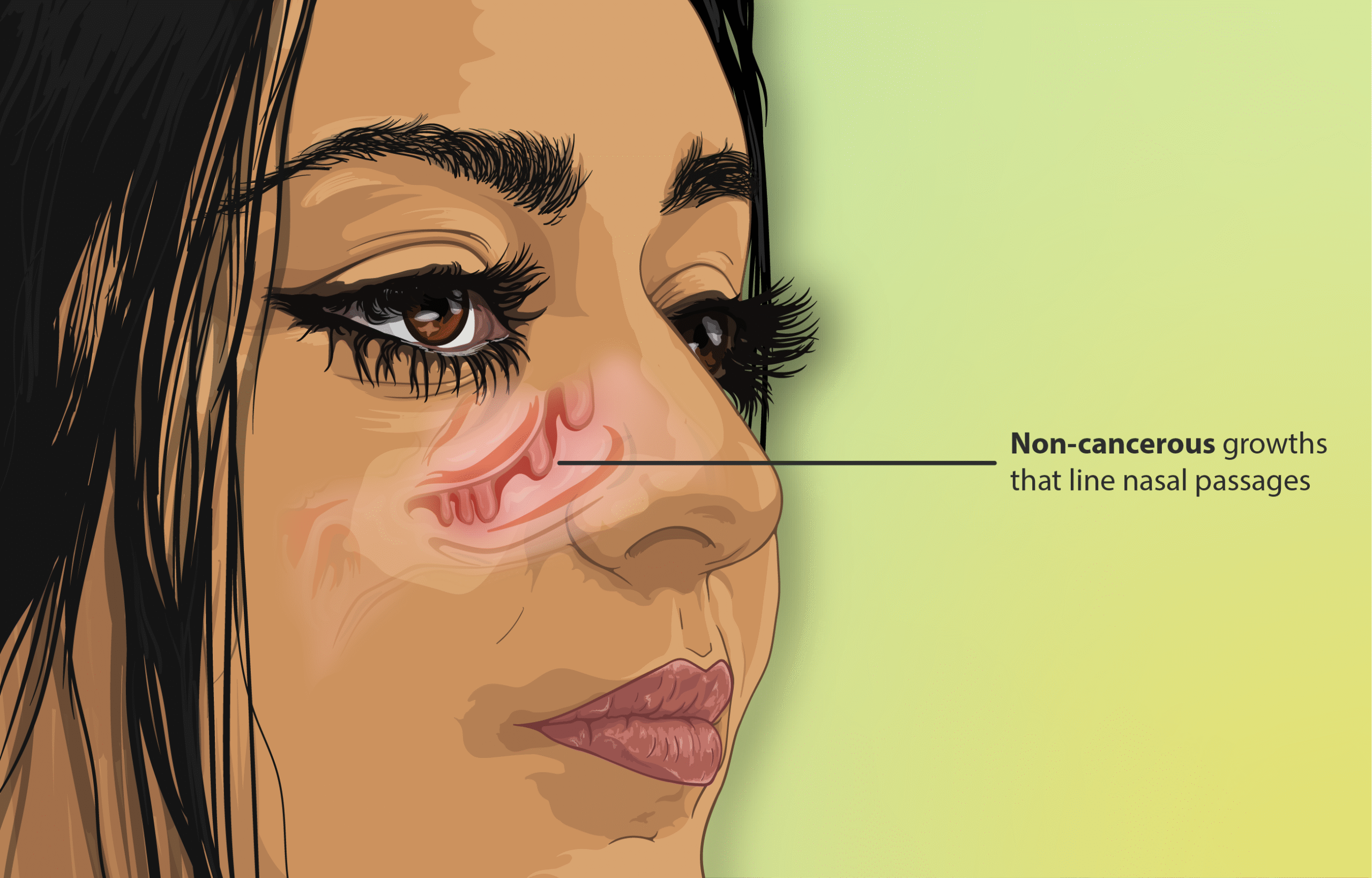Understanding How Sinusitis Develops and the Role of Nasal Polyps in It

Sinusitis develops when the tissue lining the sinuses becomes inflamed or swollen, often due to infection, allergies, or structural blockages. When inflammation blocks the natural drainage pathways, mucus builds up inside the sinus cavities. This accumulation creates pressure and pain, especially around the eyes, forehead, or cheeks. Common triggers include viral infections like the cold, environmental irritants, or seasonal allergies. While acute sinusitis may last for a short time, chronic sinusitis persists for weeks or recurs frequently, requiring deeper evaluation into nasal polyps.
Contributing Factors to Chronic Inflammation
Chronic sinusitis often arises from repeated irritation or unresolved inflammation. Frequent exposure to allergens, untreated infections, or ongoing immune system reactions can prolong the swelling in the sinus tissue. Other contributing factors include a deviated nasal septum, previous sinus surgery, or immune system disorders. These underlying issues prevent the sinuses from draining properly, which increases the likelihood of recurring symptoms. When inflammation becomes a long-term issue, the tissue lining the sinuses thickens, setting the stage for further complications.
Nasal polyps are soft, noncancerous growths that develop on the lining of the nasal passages or sinuses. They often appear in individuals with chronic inflammation and are closely associated with long-term sinusitis, asthma, and certain immune conditions. While nasal polyps themselves do not cause pain, their size and location can block airflow and sinus drainage. These obstructions worsen congestion, increase pressure in the head, and may contribute to a loss of smell. In many cases, polyps are found in both nostrils and may vary in number or size over time.
Understanding Nasal Polyps Worsen Sinusitis
When nasal polyps grow large enough to obstruct the nasal passages, they trap mucus inside the sinuses. This blockage allows bacteria to thrive, leading to more frequent or severe infections. The immune response to these infections adds to the cycle of inflammation, encouraging the growth of additional polyps. As the nasal passages become more restricted, breathing becomes more difficult, and other symptoms like facial pain or postnasal drip may increase. This ongoing pattern of swelling, obstruction, and infection makes managing chronic sinusitis more complex.
Diagnosing the Underlying Cause
To diagnose sinusitis and determine the presence of nasal polyps, providers begin with a detailed symptom history and physical exam. Nasal endoscopy allows direct visualization of the nasal passages, helping identify obstructions or inflammation. Imaging, such as CT scans, provides a clearer view of the sinuses and the extent of any blockages or growths. Once the diagnosis is confirmed, care teams develop a treatment strategy that addresses both inflammation and structural issues. Identifying the root cause is essential to choosing the right interventions.
Managing sinusitis related to nasal polyps often involves a combination of medications and procedures. Nasal corticosteroids are commonly prescribed to reduce inflammation and shrink polyps. Saline rinses may help flush out mucus and allergens, improving airflow and symptom relief. If medication fails to control symptoms, minimally invasive procedures such as endoscopic sinus surgery may be considered. This approach allows providers to remove polyps and clear the sinus passages. Reducing obstruction and inflammation supports better drainage and lowers the risk of infection.
Managing Symptoms at Home
People experiencing frequent sinus congestion or inflammation may find relief through consistent at-home care. Using a humidifier adds moisture to dry indoor air, which soothes irritated tissues and encourages drainage. Saline rinses help keep the nasal passages clear, especially during allergy season or respiratory infections. Avoiding triggers like smoke, strong odors, and allergens can reduce irritation and lower the risk of symptom flare-ups. For individuals with known nasal polyps, early symptom tracking helps determine when to seek further evaluation or adjust treatment.
Manage Nasal Polyps and Follow-Up
Nasal polyps and chronic sinusitis often require ongoing care to maintain comfort and reduce recurrence. Regular follow-ups with a provider help monitor for regrowth of polyps and adjust treatment plans as needed. Individuals may be advised to continue anti-inflammatory treatments even after symptoms improve to prevent flare-ups. Lifestyle adjustments that reduce inflammation, improve air quality, and support immune health can also contribute to better outcomes. Through consistent care and proactive management, individuals can reduce the impact of sinusitis on daily life.
- What to Expect When Visiting a Foot and Ankle Specialist
- Causes of PTSD
- The Link Between Plantar Fasciitis and Weight Gain: What You Need to Know
- How Pet Ownership Can Positively Impact Life with Fibromyalgia
- The Importance of Stretching and Flexibility in Sports Medicine
Dr. Emma Green is a health and wellness expert with over 10 years of experience in nutrition and fitness. Passionate about helping others live their healthiest lives, Dr. Green shares practical advice on wellness, nutrition, and sustainable living through LivingSpristine.






